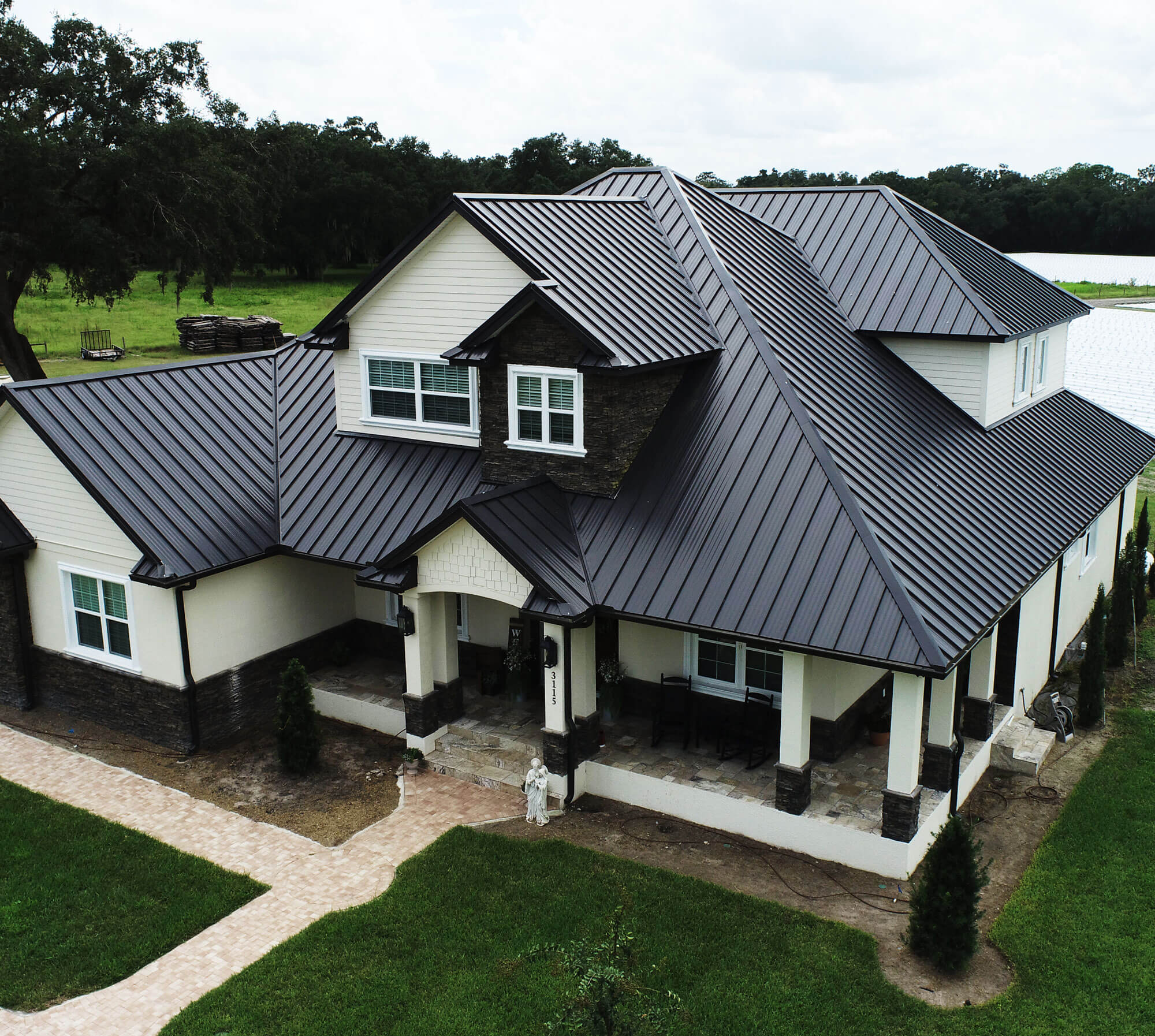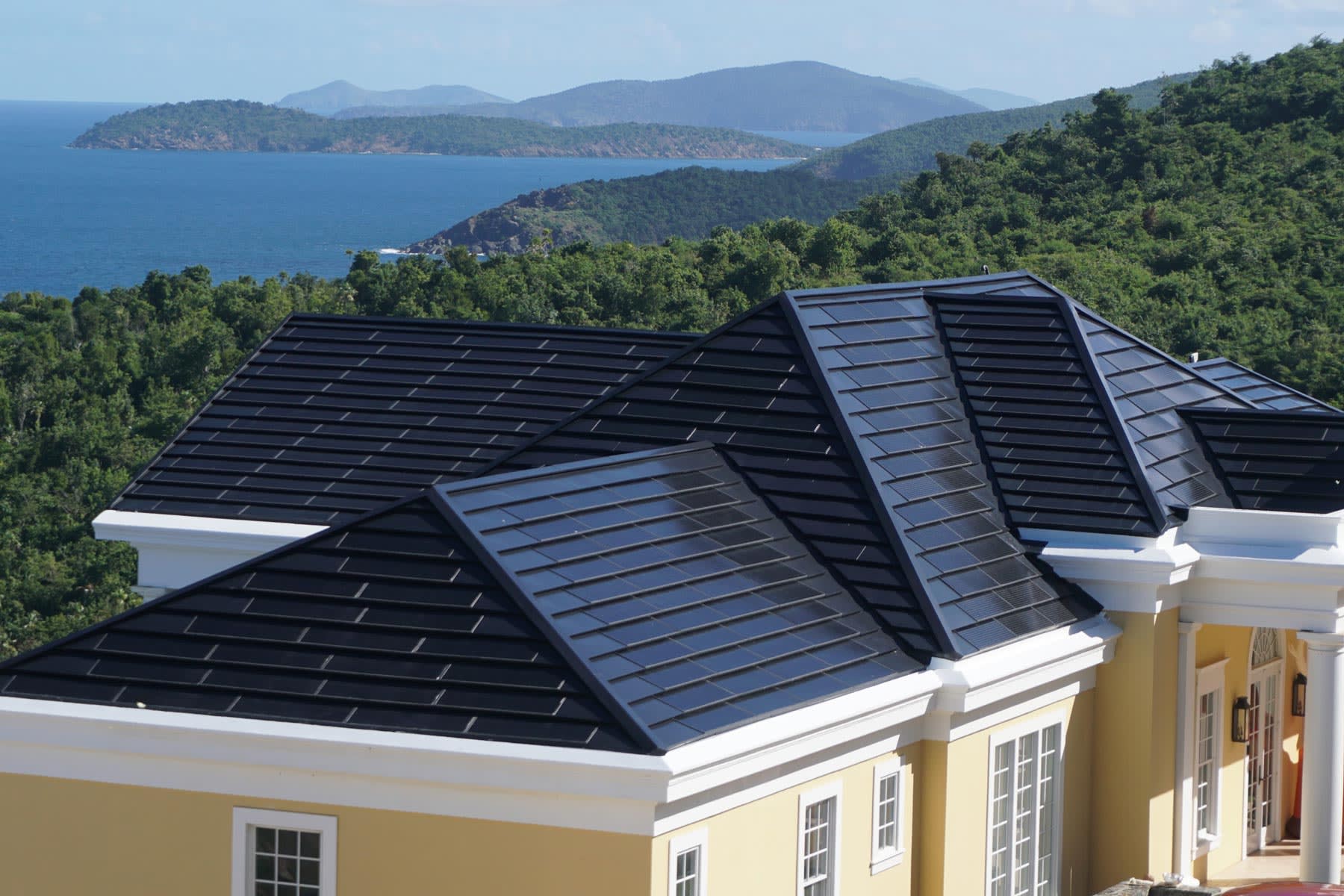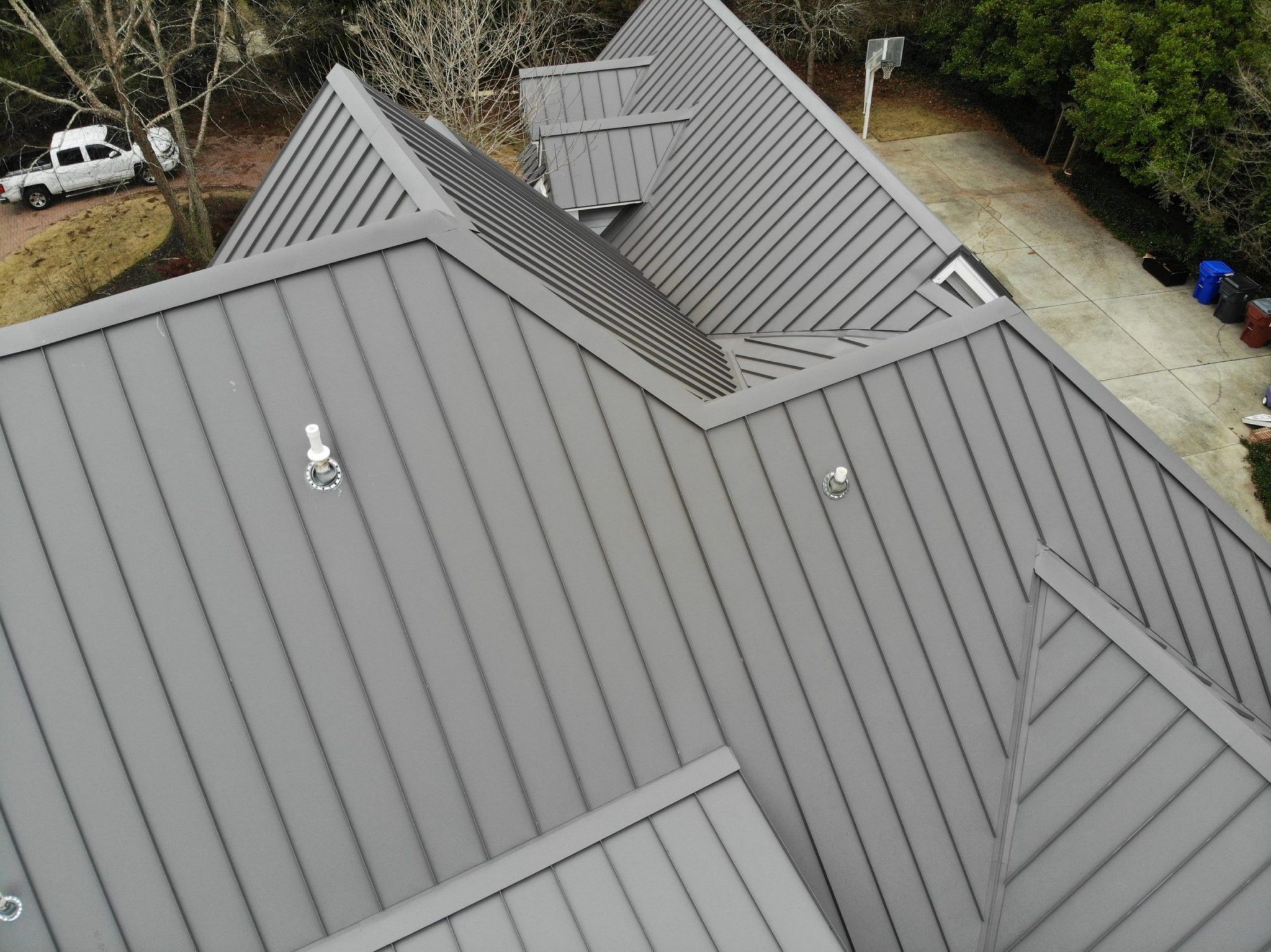When it comes to protecting your home from the elements, one of the most important decisions you'll make is choosing the right roof. Should you go with a traditional roof or a modern option like a metal roof? Both have their own advantages and disadvantages, so it's important to weigh your options carefully before making a decision.
A roof is the covering on the top of a building, which protects it from the elements. Roofs can be made from a variety of materials, including shingles, metal, tiles, and slate. The type of material you choose will depend on your budget, the climate you live in, and the architectural style of your home.
Roofs are an important part of any home, providing protection from the elements and helping to keep the interior of the home dry and comfortable. In addition, a well-maintained roof can also add to the curb appeal of your home and increase its value.
| Types of Roofs | Pros | Cons ||---|---|---|| Asphalt shingles | Most affordable option | Not as durable as other materials || Metal roofs | Durable and long-lasting | More expensive than other materials || Tile roofs | Beautiful and elegant | Heavy and expensive || Slate roofs | Durable and fire-resistant | Very expensive |
Ultimately, the best way to decide which type of roof is right for you is to consult with a qualified roofing contractor. They can help you assess your needs and make the best choice for your home.
Roofs or
Roofs are an essential part of any building, providing protection from the elements and helping to keep the interior of the building dry and comfortable. There are many different types of roofs, each with its own advantages and disadvantages. When choosing a roof, it is important to consider factors such as the climate, the architectural style of the building, and the budget.
- Protection: Roofs protect buildings from the elements, including rain, snow, wind, and sun.
- Durability: Roofs must be durable enough to withstand the elements and last for many years.
- Cost: The cost of a roof will vary depending on the type of material used and the size of the roof.
- Style: The style of a roof can complement the architectural style of a building.
- Energy efficiency: Roofs can be designed to be energy efficient, helping to reduce heating and cooling costs.
- Maintenance: Roofs require regular maintenance to keep them in good condition.
- Warranty: Most roofs come with a warranty, which can provide peace of mind in the event of a problem.
When choosing a roof, it is important to weigh all of these factors carefully. By doing so, you can choose a roof that will meet your needs and provide years of protection.
1. Protection
Roofs are an essential part of any building, providing protection from the elements and helping to keep the interior of the building dry and comfortable. Without a roof, a building would be exposed to the elements and would quickly deteriorate. Roofs protect buildings from rain, snow, wind, and sun, all of which can cause damage to the building's structure and contents.
- Protection from rain: Roofs prevent rain from entering a building, which can cause damage to the building's structure,, and contents. Rain can also lead to mold and mildew growth, which can be harmful to health.
- Protection from snow: Roofs prevent snow from accumulating on a building, which can cause the roof to collapse. Snow can also damage the building's structure and contents, and it can make it difficult to enter and exit the building.
- Protection from wind: Roofs protect buildings from wind, which can cause damage to the building's structure and contents. Wind can also blow rain and snow into a building, and it can make it difficult to open and close doors and windows.
- Protection from sun: Roofs protect buildings from the sun's UV rays, which can damage the building's exterior and interior. UV rays can also fade furniture and fabrics, and they can make it difficult to see inside the building.
In conclusion, roofs play a vital role in protecting buildings from the elements. By keeping rain, snow, wind, and sun out of a building, roofs help to preserve the building's structure and contents, and they make the building more comfortable and safe for occupants.
2. Durability
The durability of a roof is essential to its ability to protect a building from the elements and to last for many years. A durable roof will be able to withstand strong winds, heavy rain, snow, and hail. It will also be resistant to fire and pests.There are a number of factors that contribute to the durability of a roof, including the materials used, the construction methods, and the maintenance. Materials: The materials used in a roof play a major role in its durability. Some materials, such as metal and slate, are more durable than others, such as asphalt shingles and wood shakes.Construction methods: The way a roof is constructed can also affect its durability. A well-constructed roof will be able to withstand the elements better than a poorly constructed roof. Maintenance: Regular maintenance is essential to the durability of a roof. A well-maintained roof will be able to last longer than a roof that is not properly maintained.
The durability of a roof is important for a number of reasons. A durable roof will: Protect the building from the elements Last for many years Increase the value of the building Reduce the need for repairsWhen choosing a roof, it is important to consider the durability of the materials and the construction methods. You should also make sure to have your roof regularly maintained to ensure that it lasts for many years to come.
Conclusion The durability of a roof is an important factor to consider when choosing a roof. A durable roof will be able to withstand the elements and last for many years. By choosing a durable roof, you can protect your building from the elements and increase its value.
3. Cost
The cost of a roof is an important consideration when choosing a roof. The type of material used and the size of the roof are two of the biggest factors that will affect the cost. Other factors that can affect the cost include the complexity of the roof design, the pitch of the roof, and the location of the building.
- Type of material: The type of material used for the roof will have a significant impact on the cost. Some materials, such as asphalt shingles, are less expensive than others, such as metal or slate.
- Size of the roof: The size of the roof will also affect the cost. A larger roof will require more materials and labor to install, which will increase the cost.
- Complexity of the roof design: A more complex roof design will be more expensive to install than a simpler design. This is because more materials and labor will be required to install a complex roof.
- Pitch of the roof: The pitch of the roof will also affect the cost. A steeper roof will be more difficult to install than a flatter roof, which will increase the cost.
- Location of the building: The location of the building will also affect the cost of the roof. Roofs in areas with high labor costs will be more expensive to install than roofs in areas with lower labor costs.
It is important to factor in all of these factors when budgeting for a new roof. By understanding the factors that affect the cost of a roof, you can make an informed decision about the type of roof that is right for you.
4. Style
The style of a roof is an important consideration when choosing a roof. The roof should complement the architectural style of the building and enhance its overall appearance. There are many different roof styles to choose from, each with its own unique look and feel.
For example, a traditional gable roof is a good choice for a colonial-style home. A hip roof is a good choice for a modern home. And a flat roof is a good choice for a contemporary home.
When choosing a roof style, it is also important to consider the climate. A roof that is designed for a cold climate will not be as effective in a warm climate. And a roof that is designed for a warm climate will not be as effective in a cold climate.
By choosing the right roof style, you can complement the architectural style of your home and improve its overall appearance. You can also choose a roof that is designed for the climate in which you live.
5. Energy efficiency
In the context of "roofs or," energy efficiency is a key consideration when choosing a roof. A roof that is designed to be energy efficient can help to reduce heating and cooling costs, which can save money and reduce your carbon footprint.
- Insulation: Insulation is one of the most important factors in determining the energy efficiency of a roof. A well-insulated roof will help to keep heat in during the winter and cool air in during the summer. There are a variety of insulation materials available, so it is important to choose one that is right for your climate and budget.
- Ventilation: Ventilation is also important for energy efficiency. A well-ventilated roof will help to prevent heat from building up in the attic, which can lead to higher cooling costs. There are a variety of ways to ventilate a roof, so it is important to choose a method that is right for your roof design.
- Reflectivity: The reflectivity of a roof refers to its ability to reflect sunlight. A roof with a high reflectivity will help to keep your home cooler in the summer by reflecting sunlight away from the roof. There are a variety of roofing materials available with high reflectivity, so it is important to choose one that is right for your climate and budget.
- Solar panels: Solar panels can be installed on a roof to generate electricity from the sun. This can help to reduce your reliance on fossil fuels and save money on your energy bills. Solar panels are a great investment for homeowners who are looking to reduce their carbon footprint and save money on energy costs.
By choosing a roof that is designed to be energy efficient, you can save money on your energy bills and reduce your carbon footprint. There are a variety of energy-efficient roofing options available, so it is important to choose one that is right for your climate and budget.
6. Maintenance
Regular maintenance is essential to the longevity and performance of any roof. A well-maintained roof will last longer, perform better, and be less likely to experience problems. Proper maintenance can also help to prevent costly repairs and replacements down the road.
There are a number of tasks that should be performed on a regular basis to maintain a roof in good condition. These tasks include:
- Cleaning the roof: Remove dirt, leaves, and other debris from the roof to prevent them from clogging gutters and downspouts.
- Inspecting the roof: Look for any signs of damage, such as missing or damaged shingles, cracks, or leaks.
- Repairing any damage: Any damage to the roof should be repaired as soon as possible to prevent further damage.
- Repainting or resealing the roof: The roof may need to be repainted or resealed every few years to protect it from the elements.
The frequency with which these tasks should be performed will vary depending on the type of roof and the climate in which you live. However, it is generally recommended to have your roof inspected and cleaned at least once a year.
By following these simple maintenance tips, you can help to extend the life of your roof and keep it looking its best.
Conclusion
Regular maintenance is an essential part of owning a home. By taking the time to maintain your roof, you can help to protect your investment and keep your home looking its best.
7. Warranty
A roof is a major investment, and one that you want to protect. A warranty can give you peace of mind knowing that you're covered in the event of a problem.
- Coverage: Warranties typically cover defects in materials and workmanship. This means that if your roof leaks or is damaged due to a manufacturing defect, the warranty will cover the cost of repairs or replacement.
- Length: Warranties vary in length, but most last for at least 10 years. Some warranties even cover the entire lifespan of the roof.
- Transferability: Some warranties are transferable to new owners, which can add value to your home if you decide to sell.
- Peace of mind: A warranty can give you peace of mind knowing that you're covered in the event of a problem. You won't have to worry about paying for expensive repairs or replacements out of pocket.
When choosing a roof, it is important to factor in the warranty. A good warranty can give you peace of mind and protect your investment.
FAQs about Roofs
Roofs are an essential part of any building, protecting it from the elements and providing shelter for the occupants. However, there are many different types of roofs, each with its own advantages and disadvantages.
Question 1: What is the most important factor to consider when choosing a roof?
The most important factor to consider when choosing a roof is the climate in which you live. The type of roof that is best for you will depend on the amount of rainfall, snow, wind, and sun that your area experiences.
Question 2: How often should I have my roof inspected?
It is generally recommended to have your roof inspected at least once a year, especially after major storms. This will help to identify any potential problems early on, before they can cause major damage.
Question 3: How long does a roof typically last?
The lifespan of a roof will vary depending on the type of material used and the climate in which you live. However, most roofs will last for 20 to 50 years.
Question 4: What are the signs that my roof needs to be replaced?
Some of the signs that your roof may need to be replaced include: missing or damaged shingles, cracks in the roof, leaks, and sagging.
Question 5: How much does it cost to replace a roof?
The cost to replace a roof will vary depending on the size of your roof, the type of material used, and the complexity of the job. However, you can expect to pay anywhere from $5,000 to $15,000 for a new roof.
Summary
Roofs are an important part of any building, and it is important to choose the right roof for your needs. By considering the climate in which you live, the type of material used, and the cost of installation, you can choose a roof that will protect your home for many years to come.
Conclusion
Roofs are an essential part of any building, providing protection from the elements and shelter for the occupants. When choosing a roof, it is important to consider the climate in which you live, the type of material used, and the cost of installation.
There are many different types of roofs to choose from, each with its own advantages and disadvantages. By understanding the different types of roofs and their benefits, you can make an informed decision about the best roof for your needs.



Detail Author:
- Name : Roger Daugherty
- Username : rosemary.feest
- Email : schuster.carleton@gmail.com
- Birthdate : 1999-06-12
- Address : 361 Metz Inlet Terrymouth, UT 67875-0027
- Phone : 1-850-797-8312
- Company : Williamson, Cormier and Welch
- Job : Dental Hygienist
- Bio : Non impedit voluptas eos qui officiis et eos. Autem et ut atque rerum perspiciatis autem iste. Odit quaerat illum unde quasi doloremque. Distinctio cupiditate eligendi hic dolores.
Socials
facebook:
- url : https://facebook.com/gregorio_hane
- username : gregorio_hane
- bio : Dignissimos qui est est culpa sit. Eius sint ea et modi.
- followers : 5078
- following : 1256
twitter:
- url : https://twitter.com/hane1989
- username : hane1989
- bio : Et in at autem excepturi enim quis voluptas. Rerum corrupti magnam laboriosam occaecati. Quia non molestiae debitis nostrum pariatur.
- followers : 2810
- following : 547
instagram:
- url : https://instagram.com/gregorio_hane
- username : gregorio_hane
- bio : Iure inventore quos et necessitatibus inventore quos nam. Laboriosam quas ut distinctio odit.
- followers : 2682
- following : 2698
linkedin:
- url : https://linkedin.com/in/hane1989
- username : hane1989
- bio : Dolore accusantium libero culpa expedita error.
- followers : 1202
- following : 74
tiktok:
- url : https://tiktok.com/@ghane
- username : ghane
- bio : Dolorem et quia incidunt iure. Quas qui maxime libero id ipsam qui.
- followers : 6459
- following : 1887